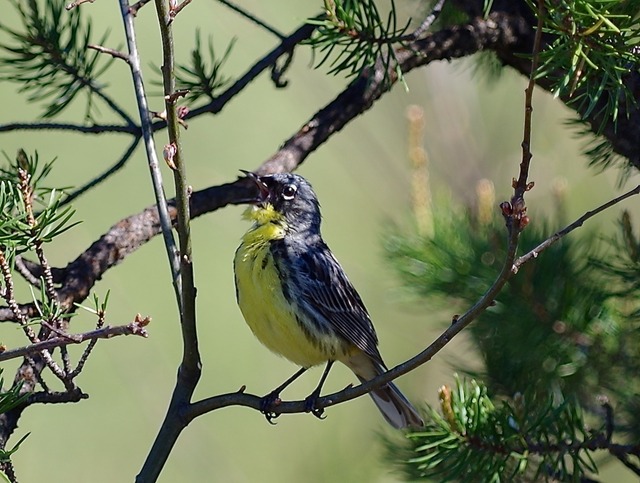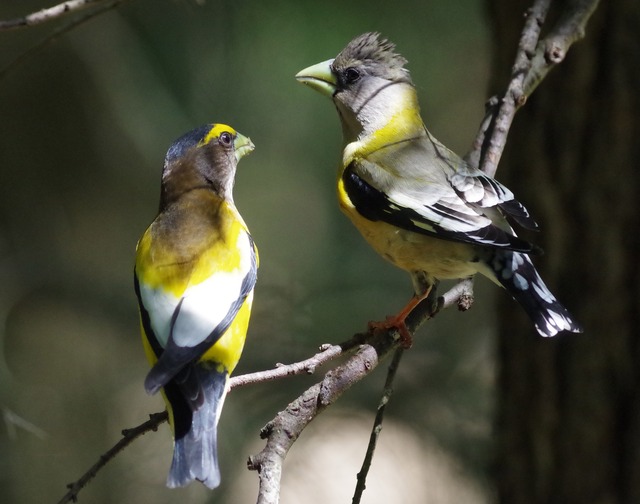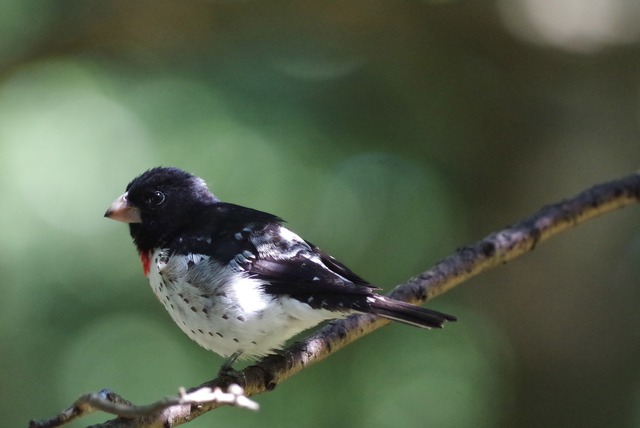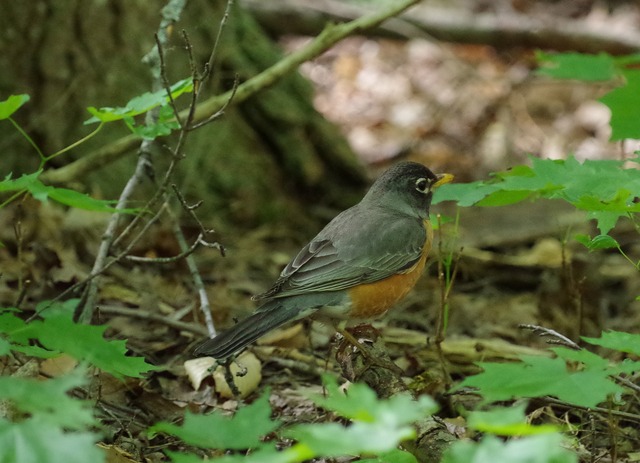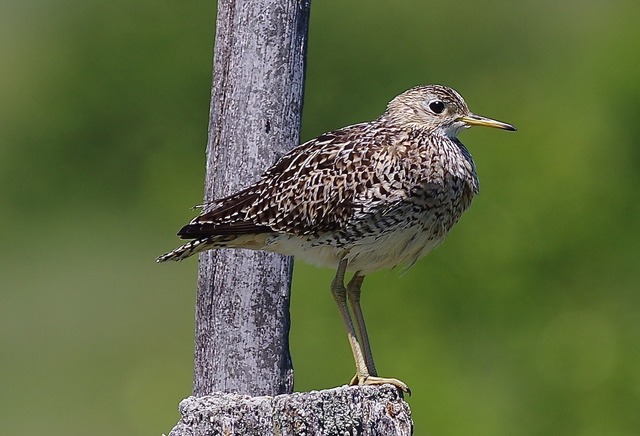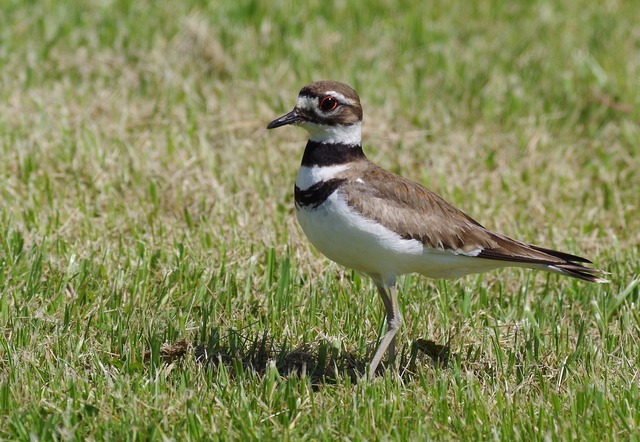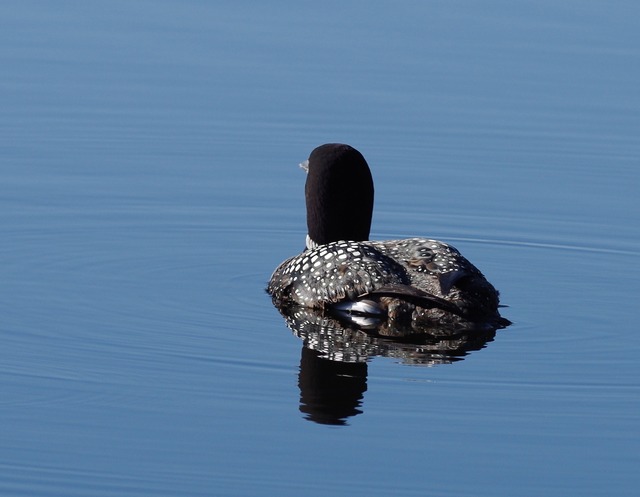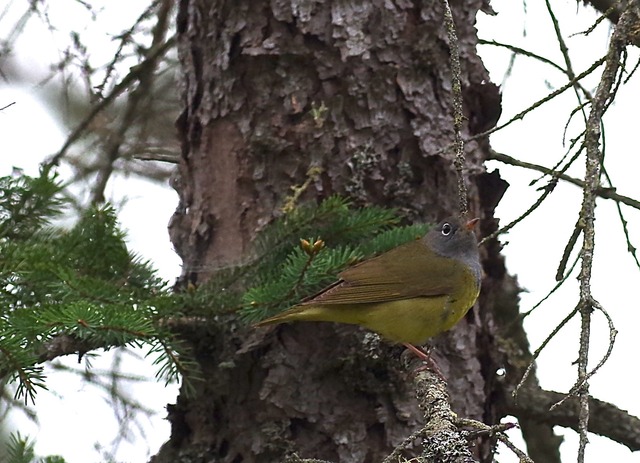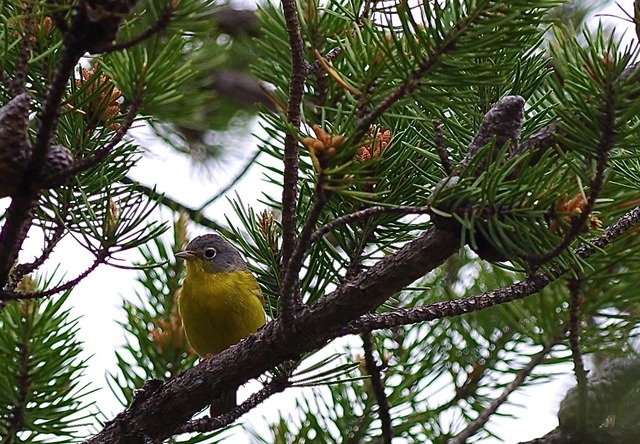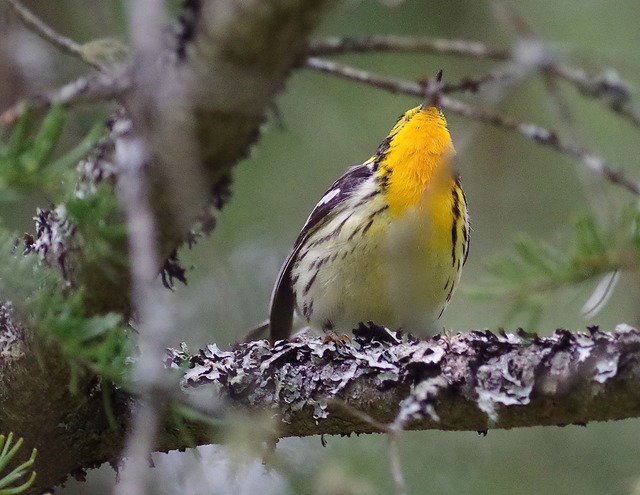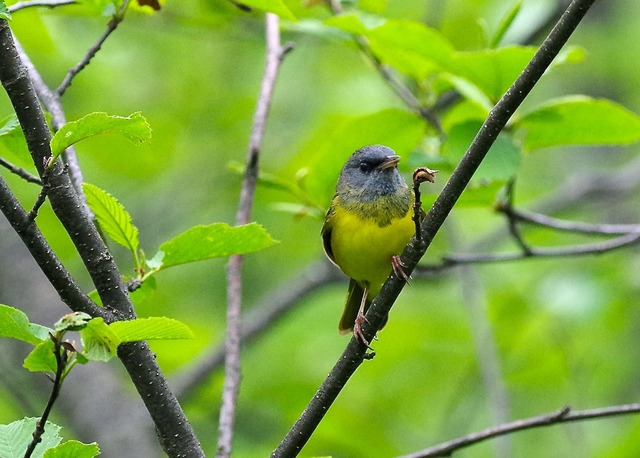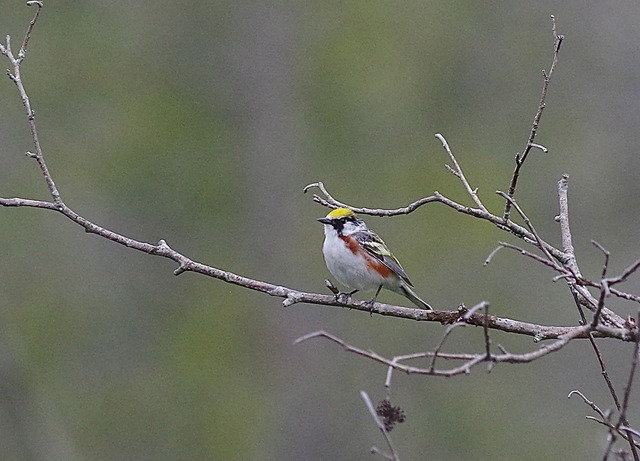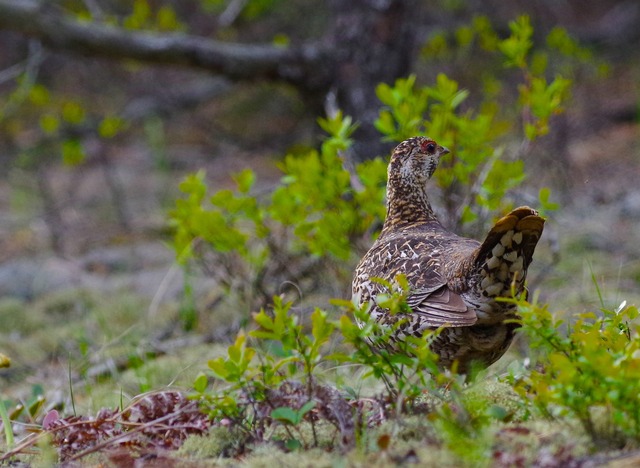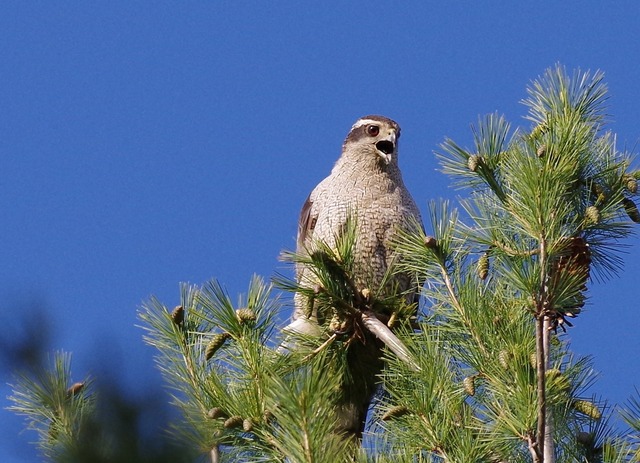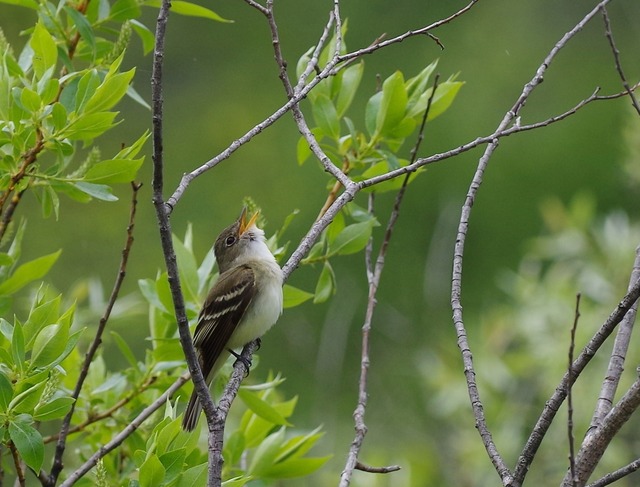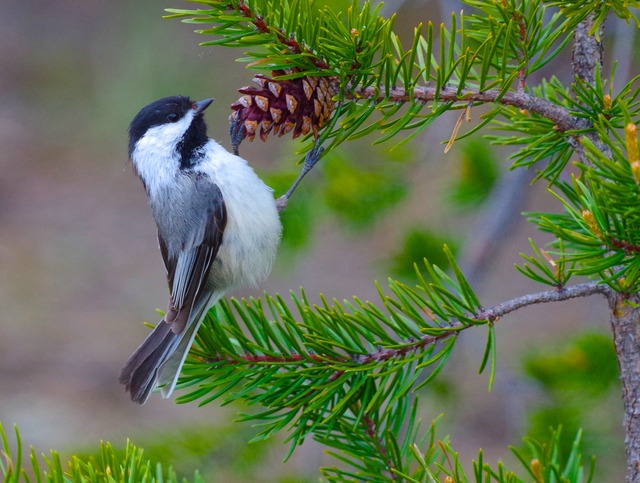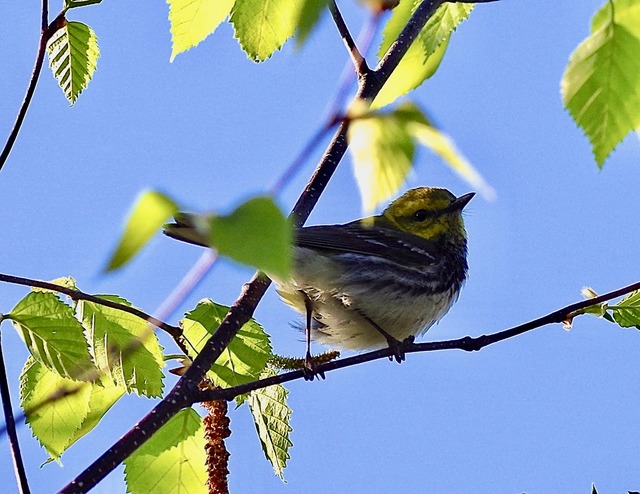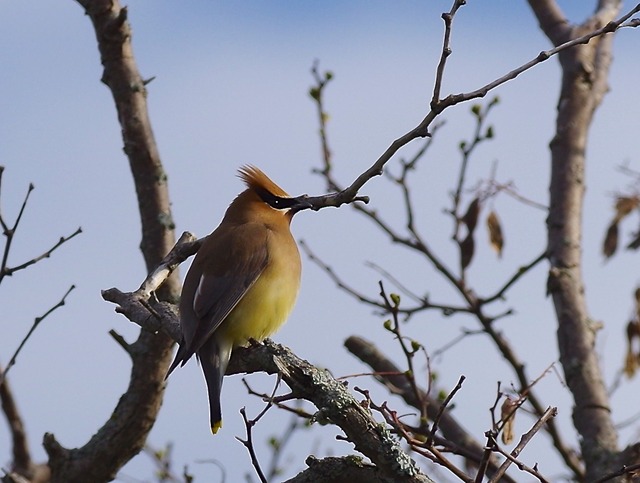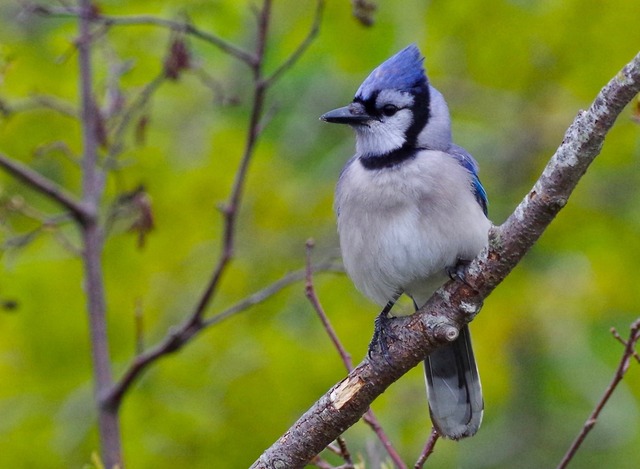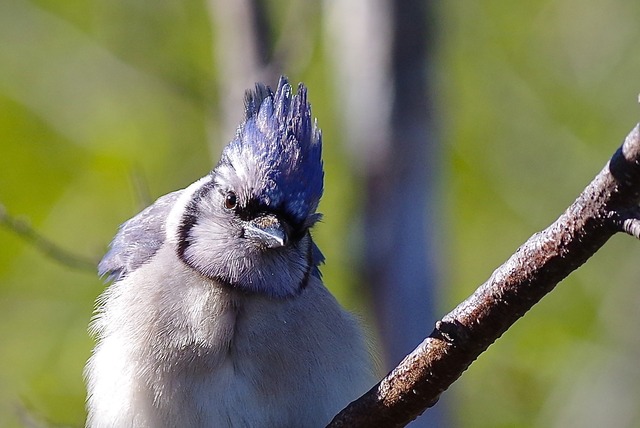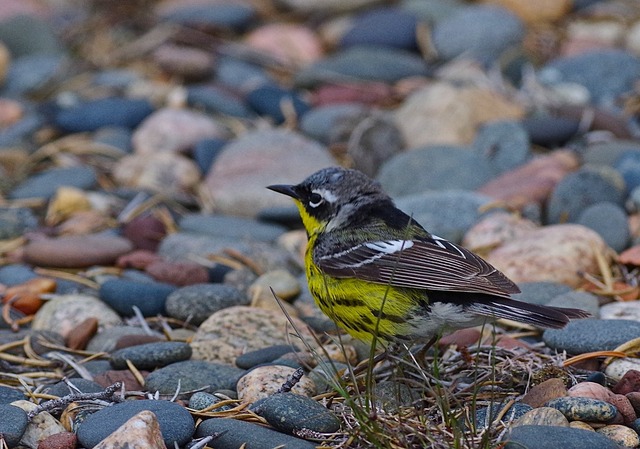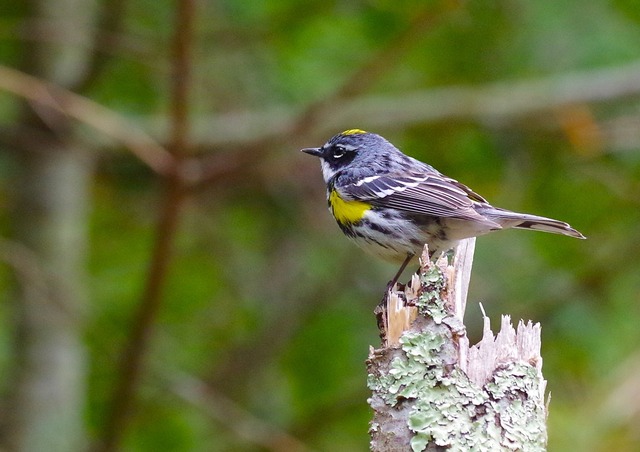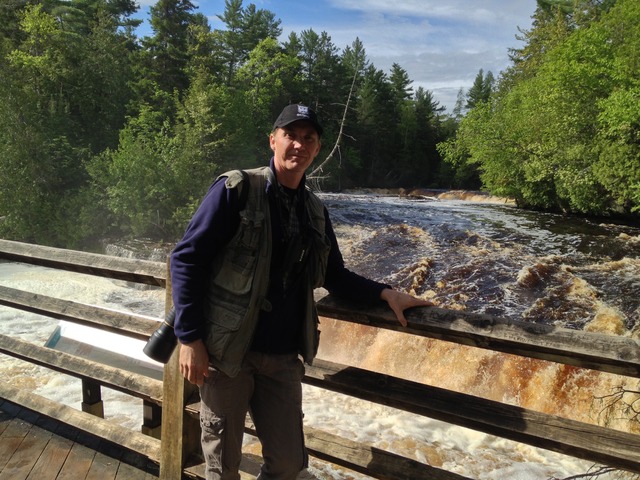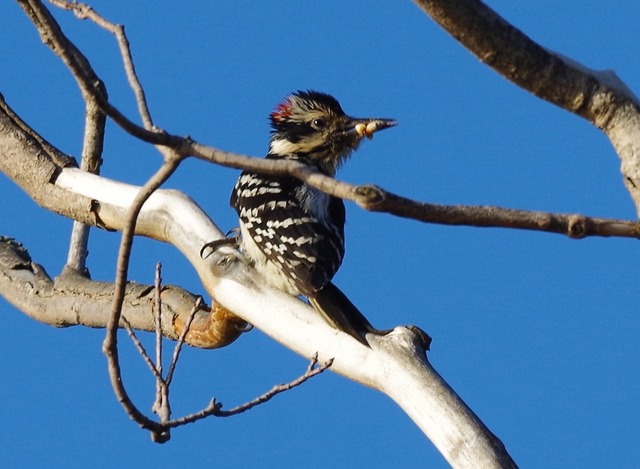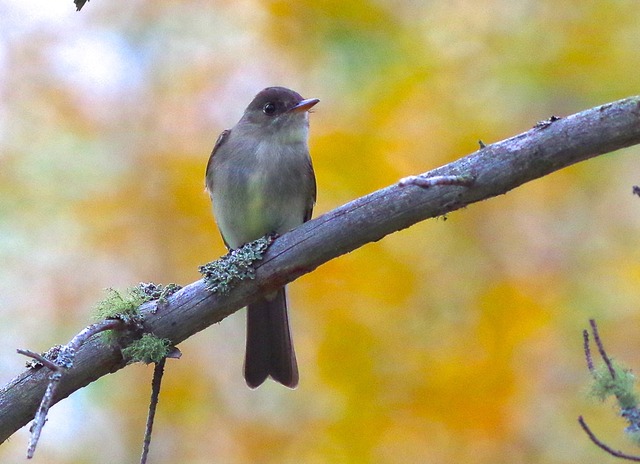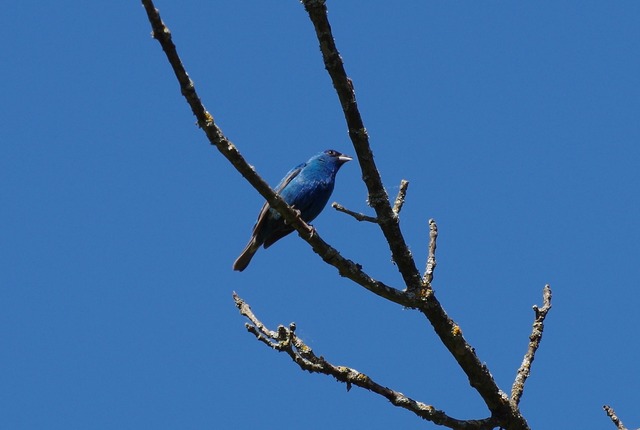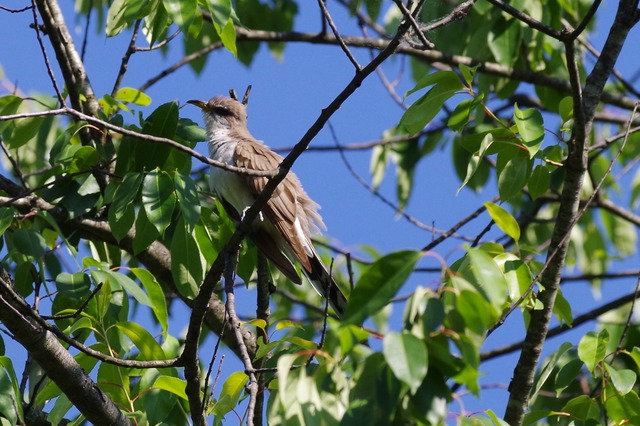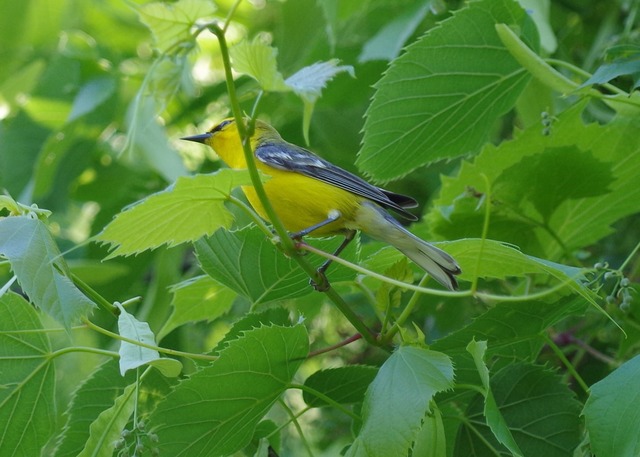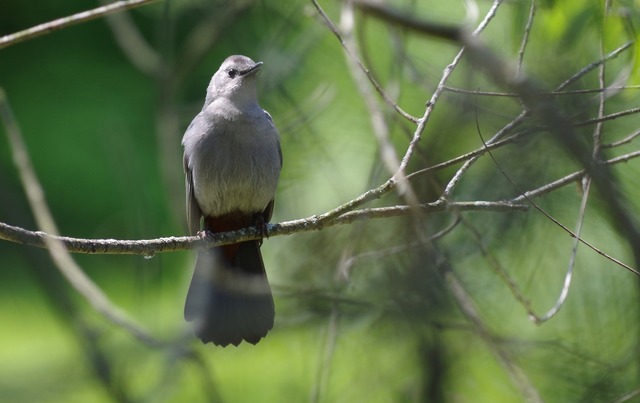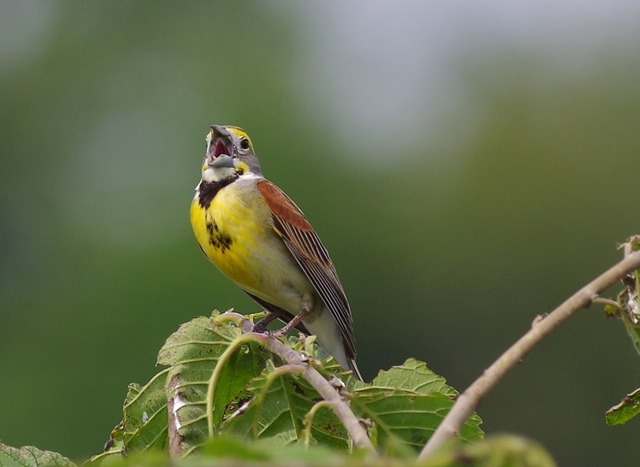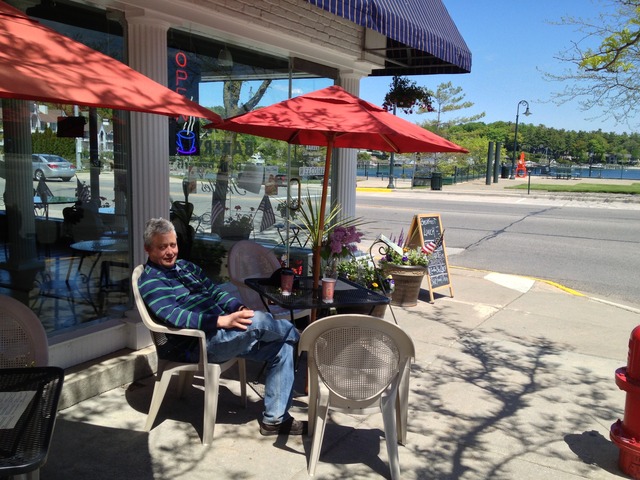Michigan June -13
Again I went to the states for some birding. This time to Michigan which is one (perhaps the best) of the best states to visit in early June as all the migrants have arrived and resident birds are breeding. My friend Nick joined me on this tour. My other american friend Jim wasn´t able to join this time. My favorite group of birds, New World Warblers are plentiful here even if some of them needs both luck and effort to find. We saw 22 different species of warblers and still missed a few that we had hoped to see. We flew into Chicago and from here we drove towards the small town of Mio where the nr 1 target species of the trip waited for us the next morning. On the way up we stopped at Warren Woods and were lucky enough to see an other target bird, the Louisiana Waterthrush. Around Mio is the best (almost the only place) on earth to see the very rare Kirtland´s Warbler. However, if you go there the chance is quite high you will see it as it´s not uncommon in the restricted area it breeds.
Close to Mio is Harwick Pines and here we had excellent views of a pair of Evening Grosbeaks which is a stunning bird. A very nice Rose-breasted Grosbeak joined as well.
Right at the entrance the common Am. Robin was searching for food.
We then headed for Pellston and the local airport, which is a good spot to look for Upland Sandpiper. What a great day seeing so many target birds and some of them in an excellent way.
Common along the way but still very handsome is the Killdeer.
As we drove close to to water a magnificent Common Loon rested i a calm bay.
Passing the bridge to the Upper Peninsula means you are entering deeper forests and the breeding grounds of many warblers. It´s not easy birding but worth every effort. Some photos are not the best but the species themselves are just great. Birds as follows; Connecticut W, Nashville W, Blackburnian W, Mourning W and the very handsome Chestnut-sided Warbler.
In the deep forest you can also be lucky to see some Grouses like this Spruce Grouse as well as Northern Goshawk.
Searching for warbler will at the same time reward you with some more common birds like this Willow Flycatcher and Black-capped Chickadee.
Even up here they call small towns Paradise and that´s where we stayed. At two times we visited Whitefish Point, which is a famous banding station as well as breeding grounds of the quite rare Piping Plover. Up here we saw some groups of late migrants like this Black-throated Green Warbler but also more resident birds just looking for food. Cedar waxwing and Blue Jay among the latter.
At Whitefish Point, birds could show up away from normal habitat like this Magnolia Warbler and the Yellow-rumped warbler which I found in small bushes away from the trees.
At Tahquamenon Falls we saw a few more birds but also had some good views and a good brewed cup of coffee (which is quite unusual in the states). Hairy Woodpecker, Eastern Wood-Pewee and Indigo Bunting.
As the days continued we had to start our travel back towards Chicago. The last day we had a flat tire and had to drive with a "donut" for several miles and then change car at the local airport, Pellston. Further south we stopped at Fort Custer area where Yellow.billed Cuckoo showed well and also at Kellog Forest where we had good views of Blue-winged warbler and Gray Catbird.
At Three Oaks Grassland close to Warren Woods we finally saw the Dicksissel singing with full power just next to the road.
I´ve said it before but need to say it again. I just love doing this type of trips when you travel independently with a nice friend and put the effort you like for each day. Michigan is a true hot spot if you like to see many warblers and of course many other birds at their breeding grounds. Last picture shows Nick taking a well deserved break after a long drive.
- Wild Turkey Meleagris gallopavo. 2 birds around Mio.
- Common Loon Gavia immer. 2 ex. Next to Harbor Springs.
- Great Blue Heron Ardea herodias. 1 ex. Wilderness S.P.
- Turkey Vulture Cathartes aura. Up to 3 ex. Seen while driving north.
- Osprey Pandion haliaetus. 1 ex close to Vermillion.
- Cooper´s Hawk Accipiter cooperii. One bird seen at Fort Custer.
- Northern Gooshawk Accipiter gentilis atricapillas. One bird seen FR 3145 Hiawatha N.F.
- Bald Eagle Haliaeetus leucocephalus. 1 ex. Vilderness S.P and 2 birds Whitefish Point.
- Broad-winged Hawk Buteo platypterus. Totally 7 birds seen at different places throughout.
- Red-tailed Hawk Buteo jamaicensis.. 2 birds seen in southern Michigan while driving.
- Sandhill Crane Grus canadensis. Two breeding pairs just south of Paradise.
- Piping Plover Charadrius melodus. 4 beautiful birds seen at their breeding grounds at Whitefish Point.
- Killdeer Charadrius vociferus. Quite common throughout.
- Spotted Sandpiper Actitis macularia. 2 ex. Wilderness S.P and one bird at Tahquamenon Falls.
- Upland Sandpiper Bartramia longicauda. Two birds seen well at both times we visited Pellston (north of the airport).
- American Woodcock Scolopax minor. One bird was flushed as we were trying to get better views of a Mourning Warbler at FR 3139.
- Ring-billed Gull Larus delewarensis. Yes
- Herring Gull Larus argentatus. Yes
- Caspian Tern Sterna caspia. 2 ex at Wilderness S.P.
- Black Tern Chlidonias niger. 15 birds close to Newberry at U.P.
- Rock Pigeon Columba livia. Yes, a few.
- Mourning Dove Zenaida macroura. Yes, quite a few.
- Yellow-billed Cuckoo. Two birds were calling and later also seen well at Fort Custer.
- Common Nighthawk. One seen from the car when arriving to paradise.
- Ruby-throated Hummingbird. In total, 4 birds seen at U.P at different locations.
- Red-headed Woodpecker. One seen close to Fort Custer.
- Red-bellied Woodpecker. In total 6 birds seen at three different places and days.
- Yellow-bellied Sapsucker. 2 birds seen at Wilderness S.P.
- Downy Woodpecker. In total 4 birds seen at the locations in southern Michigan.
- Hairy Woodpecker. One bird when we stretched our legs outside New Buffalo.
- Northern Flicker. Quite common throughout.
- Pileated Woodpecker. One bird seen at Farm Truck Road.
- American Kestrel. One bird at Wilderness N.F.
- Merlin. 3 birds seen at Whitefish Point.
- Eastern Wood-Pewee. In total 6 birds seen and heard the 3 first days.
- Alder Flycatcher. One bird seen and heard singing at FR 3344.
- Willow Flycatcher. 5 birds around U.P. One seen very nicely as it kept on singing just a few meters away.
- Least Flycatcher. 2 birds seen well at Vermillion.
- Eastern Phoebe. One bird at Warren Woods and 3 birds at Hiawatha N.F.
- Great Crested Flycatcher. 4 birds at different southern locations.
- Eastern Kingbird. Quite common. Seen throughout.
- White-eyed Vireo. 1 bird seen in a forest close to Fort Custer.
- Blue-headed Vireo. A total of 6 birds seen at the U.P.
- Warbling Vireo. One bird at Wilderness and two more around Pellston.
- Philadelphia Vireo. One bird close to Pellston.
- Red-eyed Vireo. More than 15 birds seen at the U.P.
- Blue Jay. Common, especially at Whitefish Point were several hundred had gathered.
- American Crow. Yes.
- Common Raven. Yes, but not as common as the Crow.
- N. Rough-winged Swallow. 3 birds seen on the loop outside Mio.
- Tree Swallow. One bird as above.
- Barn Swallow. Quite a few seen.
- Cliff Swallow. 2 birds outside New Buffalo.
- Black-capped Chickadee. 2 birds Warren Woods, 2 birds Mio and common at Whitefish Point.
- Tufted Titmouse. Two birds seen at Warren Woods.
- Red-breasted Nuthatch. 2 birds Whitefish Point.
- White-breasted Nuthatch. One bird at Warren Woods and another at Hiawatha N.F.
- Blue-gray Gnatcatcher. One bird seen at Fort Custer area.
- Golden-crowned Kinglet. Heard several times but 2 birds seen well at Whitefish Point.
- Eastern Bluebird. Seen with 13 bird throughout the journey.
- Swainson´s Thrush. Three birds seen at Hiawatha S.F.
- Hermit Thrush. One bird at FR 3344.
- Wood Thrush. Heard many times but only seen once at Tahquamenon Falls.
- American Robin. Quite common.
- Gray Catbird. Common at Kellogg Forest. About ten birds was seen.
- Brown Thrasher. 3 birds around Mio and two more around Pellston.
- European starling. Yes
- American Pipit. One bird seen at Whitefish Point.
- Cedar Waxwing. Quite common, especially at the northern part of U.P.
- Louisiana Waterthrush. A very good start of our trip when Nick found one beautifully standing on a log close to the water at Warren Woods. One of the best birds of the trip.
- Blue-winged warbler. 3 splendid birds at Kellogg Forest. Responded well to taping.
- Black-and-White Warbler. A total of 6 birds of this “trunk-climbing” bird. Both wilderness N.F. and U.P.
- Prothonatary Warbler. 2 birds finally seen after persistent searching at Fort Custer Area. Responded to taping but quite shy and elusive.
- Tenessee Warbler. One bird seen at Whitefish Point.
- Nashville Warbler. The most common bird at U.P., especially at Hiawatha N.F. Around 20 birds seen in total.
- Connecticut Warbler. One stunning bird found at FR 3344. Was singing when we stopped the car but responded to tape which was good as we had to walk several hundred meters into the forest in swampy terrain before we had good views.
- Mourning Warbler. Another stunner, this bird responded to taping “and came out” to see what was happening at a small parking area at FR 3139. The purpose of the stop was to have a lunch-sandwich. Lucky us! Two birds also heard outside Wilderness but were never seen.
- Common Yellowthroat. Not so common on this trip. Heard a couple of times but only one seen at Tahquamenon Falls.
- American Redstart. Together with Nashville the most common warbler. Seen every day at U.P and also around Wilderness N.F.
- Kirtland´s Warbler. The target species for this region. We participated in a free guided tour at Mio. Two birds seen well during this walk. Later, we also saw another 5 birds in the same area. Was quite an active singer.
- Northern Parula. Only one bird seen at Whitefish Point.
- Magnolia Warbler. A total of 5 birds were seen at the U.P. Four of them at Whitefish Point.
- Blackburnian Warbler. A total of 9 birds seen both at Whitefish Point and in breeding areas in deep forest. A very stunning bird.
- Yellow Warbler. A total of 8 birds at U.P. and also Wilderness N.F. with a few ones.
- Chestnut-sided Warbler. So gently colored. At the same time strong and soft in plumage. 3 birds seen in the eastern part of Hiawatha N.F. Nick´s favorite warbler.
- Palm Warbler. The first warbler to be seen at U.P. Seen well just a few hundred meters in on FR 3344.
- Pine Warbler. One bird around Wilderness N.F. and two more at Whitefish Point.
- Yellow-rumped (Myrtle) Warbler. A total of 15 birds at Wildernes S.P. and U.P. 10 birds seen one day at Whitefish Point.
- Black-throated Green Warbler. Not uncommon. Heard in many forests and seen well at a couple of times. A total of 8 birds.
- Canada Warbler. 2 stunning birds showed well in Wildersness S.F. Responded well to taping. Another two were seen at FR 3139.
- Wilson´s Warbler. One single bird was seen at Vermillion.
- Eastern Towhee. One single bird showed well at the Kirtland´s walking tour, Mio.
- Chipping Sparrow. Common at Whitefish Point.
- Field Sparrow. 2 ex. at the Kirtland´s walking tour, Mio. One seen around Fort Custer.
- Vesper Sparrow. 2 birds at the Kirtland´s walking tour, Mio.
- Savannah Sparrow. One bird seen on the loop around Mio.
- Song Sparrow. One bird seen on the loop around Mio. 2 more outside Pellston.
- Swamp Sparrow. Not easy to see but we managed to see one along FR 3145 and another at Vermillion.
- White-crowned Sparrow. 4 birds around Mio and also Pellston. 2 more at Whitefish Point.
- Summer Tanager. Two birds Pellston and one more at Fort Custer.
- Northern Cardinal. One bird close to Kellogg Forest.
- Rose-breasted Grosbeak. A few scattered birds along our trip. Good views at 3 birds at Harwick Pines S.P.
- Indigo Bunting. Common around Fort Custer and Kellogg Forest. About 10 birds seen.
- Dicksissel. Finally we had excellent views of 2 birds at Three Oaks Grassland close to Warren Woods. Said to be a declining species together with Bobolink.
- Bobolink. Eventually we found one during the loop around Mio close to the Amish settlements in this area.
- Red-winged Blackbird. Common.
- Western Meadowlark. One seen near Pellston.
- Brewer´s Blackbird. Seen close to the Meadowlark above.
- Common Grackle. Quite common in the lower peninsula.
- Brown-headed cowbird. The same and above. There was a trap for these birds in the Kirtland´s Warbler area.
- Baltimore Oriole. The only Oriole seen during the trip. 2 birds near Pellston and about 4 birds around Fort Custer and Kellogg Forest.
- House Finch. 2 birds seen outside Warren Woods.
- Red Crossbill. A flock of 20 birds was seen on Farm truck Road.
- Pine Siskin. Just a few birds at the U.P.
- American Goldfinch. Just one bird at Whitefisery good at h Point.
- Evening Grosbeak. A pair seen very nicely at Harwick Pines S.P. visitor center.
- House Sparrow. Yes.
Leif Rydell, Sweden.

